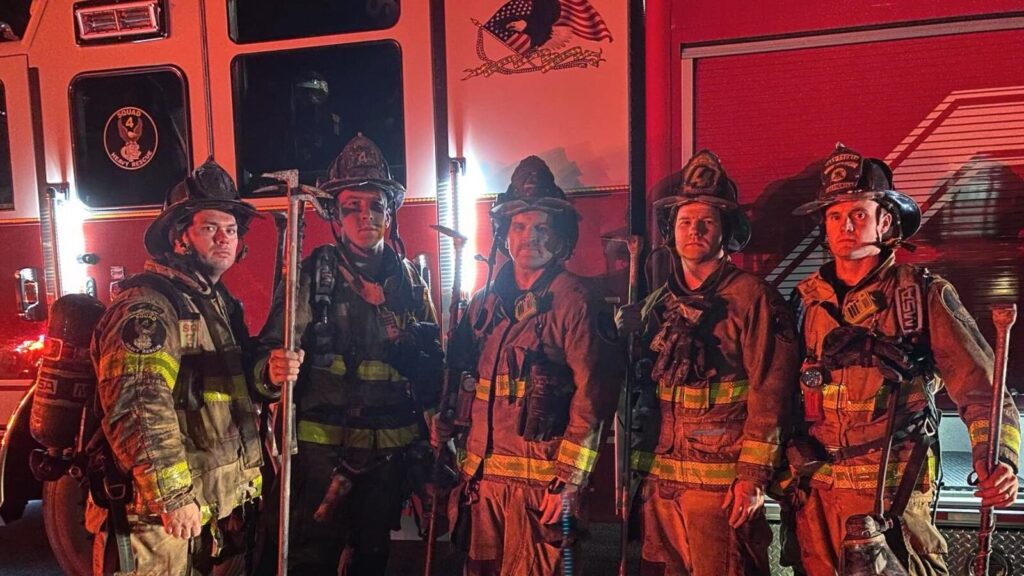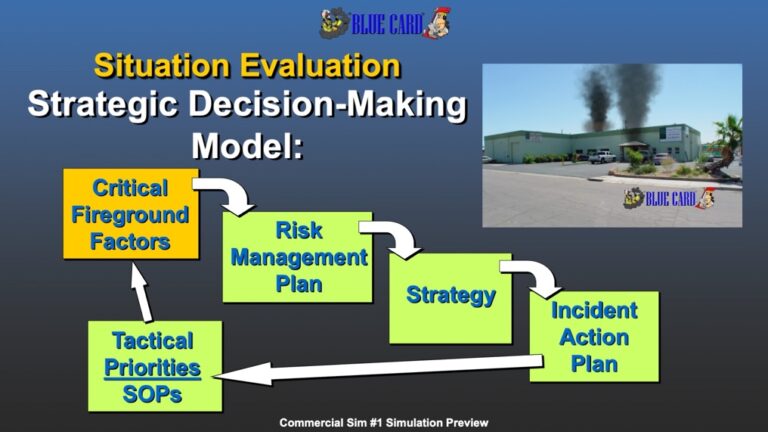Are you strategically negligent? Keep reading to learn what it is & how IC’s avoid it.
February 4, 2025Are you strategically negligent? Keep reading to learn what it is & how ICs can avoid it.
By Steve Lester
B Shifter Buckslip, Feb. 4, 2025
I was listening to a recent B Shifter podcast, and the term strategic negligence came up. I had never heard this term before, but it stimulated some thought. I quickly recalled several incidents where I had listened to live or recorded fireground audio and thought to myself, “Wow, this sounds like it’s going bad and in a hurry!” or, “Wow, that communication could have gone much better; they forgot to say this, this and this… .” Truthfully, I have listened to audio of myself as an IC and thought the same things. Let’s take the opportunity to look into this term and see if we can do all we can to avoid it.

What is Strategic Negligence?
We can view strategic negligence from two different perspectives: Some may quickly assume that strategic negligence implies recklessness—taking excessive risks without caution, endangering firefighters on scene. This belief coincides with the study of various NIOSH LODD reports we cover in our Mayday Management workshops. Most of the reports analyzed in that workshop involve crews operating in offensive positions during defensive fire conditions.
Another perspective is that strategic negligence stems from risk aversion, where individuals may prioritize their own safety and that of their team over saving lives and property.
Both of these opposite ends of the spectrum could be strategically negligent. To better understand this term, let’s break down the term by each word’s meaning. Let’s look at the root of the word strategic, which is strategy. Strategy is defined as “a plan of action or policy designed to achieve a major or overall aim.” (Oxford Languages). Another definition is “the science and art of military command exercised to meet the enemy in combat under advantageous conditions” (Merriam-Webster). Regarding firefighting, the enemy is the incident (or the fire). In Blue Card Command, only two strategies exist: offensive and defensive. There is no middle ground when it comes to strategy. There is no transitional, marginal or middle-of-the-road strategy. We can apply water exteriorly and still be in the offensive strategy; this is a tactic (not a strategy) called a “quick hit.” We do this before making entry for interior fire attack.
Negligence is defined as “failure to take proper care in doing something” (Oxford Languages). A better definition may be “failure to behave with the level of care that a reasonable person would have exercised under the same circumstances” (Cornell Law). This second definition aligns more closely with how we describe negligence in emergency medical services. When we fail to give patients a medication they qualify for based on their signs and symptoms, we are negligent and may be held responsible by our chain of command and/or medical direction.
When we marry these definitions, we can see that strategic negligence is when a strategic IC (IC No. 2) fails to command the fire (or any incident) to the level that another reasonable IC would under similar circumstances. I purposefully left the initial IC (IC No. 1) out of this conversation for the following reasons:
- IC No. 1 typically has less experience at overall incident command.
- IC No. 1 approaches the incident with a “small unit” mindset, i.e., “Let’s get in there and get the job done!”
- IC No. 1 typically performs the size-up and then proceeds to the interior. This prevents them from seeing the big picture and making adjustments based on all the information. This is why Blue Card stresses the importance of getting that strategic IC (IC No. 2) in place as quickly as possible.
“Effective Control by the IC = worker safety.”
—Alan V. Brunacini, Timeless Tactical Truths
The safest thing a department can do for its fireground operations is to have a strategic incident commander in place in a stationary command post, listening and responding to radio traffic, continuously evaluating the critical factors and adjusting the incident action plan as needed to fit what’s going on right now. The three radio communication examples below highlight some strategic negligence red flags.
Example 1: “Command to all units. I refuse to lose this building. Command to Engine 5. Pull a fourth handline from Engine 1 and proceed interior to back up other units already deployed from the Alpha side.”
Example 2: “Command to all units. We have one room that is completely involved in fire and smoke throughout. There’s too much to risk. Let’s go ahead and perform a strategic shift. All units exit the building and report PAR upon exit.”
Example 3: “Command to Truck 7. Go ahead and deploy to perform fireground operations. You know what to do!”

The following are some common ways an IC can become strategically negligent:
- Failing to assign crews with a clear task, location and objective (as shown in Example 3 above).
- Failing to apply the risk management plan properly (we do not risk a lot to save what is going to be gathered by an excavator and hauled off in a dumpster).
- Failing to reinforce resources effectively. Follow the Three-Deep Deployment Model and don’t hesitate to request additional help—you can always send them back if they’re not needed.
- Utilizing tactics that do not effectively line up with your strategy (e.g., allowing crews to use exterior handlines in close proximity during a defensive strategy).
- Failing to track resources with a tactical worksheet, which allows you to quickly account for crews and adapt if something goes wrong—don’t get caught behind the eight ball!
- Mismanaging span of control. Don’t let pride get in the way—delegate units to a division supervisor when the workload exceeds what you can effectively manage.

To avoid becoming strategically negligent, focus on these key actions:
- Continually evaluate your critical factors.
- Make assignments appropriately and maintain the Three-Deep Deployment Model.
- Ensure your strategy aligns with current critical factors—if it doesn’t, adjust it immediately.
- Prioritize getting water on the fire and between the fire and
- potential victims.
- If it’s searchable, search it!
Can an IC be considered strategically negligent? Absolutely. How an IC is held accountable for strategic negligence depends on the organization’s policies and chosen course of action (e.g., reprimand, leave without pay, demotion). Beyond any punitive measures, no IC would ever want to be negligent or bear responsibility for a firefighter or civilian injury or death—no one wants that on their conscience. Take care of your customers, and take care of your people!

Steve Lester is a division chief with Cobb County Fire and Emergency Services near Atlanta. He became a career firefighter in 1996 and worked his way through the ranks. Steve has degrees in fire management and nursing; he has served his department as a paramedic, special operations medic and Blue Card Instructor and works as a registered nurse. Steve assisted his department with developing recent editions of the “High-Rise Operations Manual” and the “Incident Management Manual.” Steve has been a speaker at the Metro Atlanta Firefighters Conference and is a senior advisor for the 575 F.O.O.L.S.



